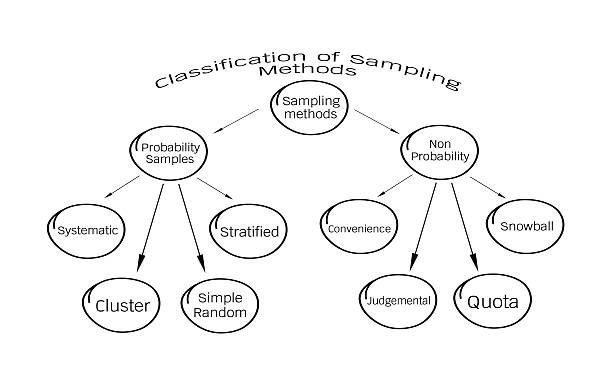Exploring Non-Probability Sampling
Introduction
When it comes to data collection, Non Probability Sampling stands out as a key method researchers often employ. Unlike its counterpart – probability sampling, where every unit has a known chance of selection, in Non Probability Sampling, selections are made based on subjective criteria. Let us explore the real-world examples of this method, and try to understand its significance.
Non Probability Sampling example: A Brief Overview
Non Probability Sampling isn’t about random chances. It’s about choosing specific units based on particular criteria, often with an underlying reason. Imagine a journalist looking to cover the lifestyle of Hollywood actors. They wouldn’t interview every person in Los Angeles; they’d pick specific actors based on certain criteria. This is a simplistic view of Non Probability Sampling. But let’s dive deeper.
Why Opt for Non Probability Sampling?
There are several compelling reasons:
– Ease of Access: It’s often easier to get data from accessible subjects than a random selection.
– Budget Constraints: Sampling everyone might be too costly. Non Probability Sampling can be more affordable.
– Specific Insights: If you’re looking for specialised knowledge, you might only need input from a particular group.
Key Types of Non Probability Sampling

There are various methods, each with its quirks:
1. Judgmental Sampling: Based on the judgement of an expert. E.g., a food critic sampling restaurants.
2. Quota Sampling: Demographics play a role here. Researchers might interview 50 males and 50 females to get a balanced view.
3. Snowball Sampling: Useful for hard-to-find populations. One participant refers to another, creating a ‘snowball effect’.
4. Convenience Sampling: As the name suggests, it’s about convenience. E.g., surveying people nearby because they’re easily accessible.
Advantages of Non Probability Sampling
– Speed: Faster to implement since it doesn’t require randomization.
– Cost-effective: Often cheaper than other methods.
– Flexibility: Researchers have the liberty to choose who to include.
Disadvantages to Consider
– Bias: The results might not be representative of the entire population.
– Limited Generalization: Findings might not be applicable to a broader group.
Determining When to Use Non Probability Sampling
It’s all about the research objective. This is not the best method if your objective is to procure a result that is generalized. But for specific, niche insights, Non Probability Sampling shines bright.
Examples in Everyday Life
We encounter this method more often than we realise:
– Product Reviews: Brands might send products to influential reviewers, not to every user.

– Pilot Tests: Before launching a product, companies might test it on a select group.
Non Probability Sampling in Business
Companies utilise this approach for:
– Market Research: Focusing on a niche audience to get insights.
– Feedback Collection: Gathering feedback from a select group of loyal customers.
Applications in Social Research
This method is often used for:
– Exploratory Studies: Where the aim is to get a preliminary understanding.
– Case Studies: Focusing on a specific group or individual in depth.
Contrasting with Probability Sampling
While both methods have their merits:
– Probability Sampling: Ensures every unit has a known chance of selection.
– Non Probability Sampling: Units are selected based on specific criteria, often subjective.
FAQs
– What is the primary difference between probability and non-probability sampling?
The main distinction lies in the selection process. In probability sampling, every unit has a known chance of being selected. In non-probability sampling, selections are made based on particular criteria.
– Can findings from non-probability sampling be generalised?
Generally, it’s challenging to generalise these findings for the entire population since the sample might not be representative.
– Is non-probability sampling always subjective?
Mostly, yes. The criteria for selection are often based on specific needs, objectives, or convenience.
– Why is non-probability sampling popular in market research?
It allows researchers to gather in-depth insights from a specific group, making it ideal for niche markets.
– Does non-probability sampling always introduce bias?
There’s a higher chance of bias since the sample might not represent the entire population. However, this doesn’t mean the findings are irrelevant.
– Which type of non-probability sampling is the easiest to implement?
Convenience sampling is considered the easiest since it’s based on selecting the most accessible subjects.
Conclusion
Non-Probability sampling is characterized by its distinct methodology and provides a specialized perspective on particular sections of the population. Even though is does not provide a full overview, when executed effectively, it provides great insights.
External Links/ Sources:
